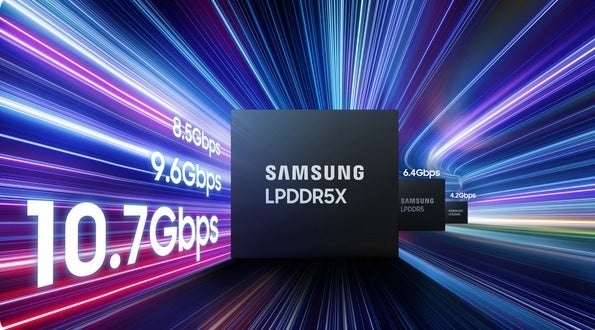The company’s Research & Development spending hit an all-time high on 2024 and this trend continued in the first quarter as such expenditures rose 16% from last year’s Q1 to 9 trillion won ($6.3 billion). Samsung’s Device Solutions business which includes semiconductors and displays, generated KRW 25.1 trillion in revenue and KRW 1.1 trillion in operating profits ($17.52 billion and $770.3 million respectively).

Samsung’s industry-leading 10.7Gbps LPDDR5x RAM chip will help support AI. | Image credit-Samsung
Samsung Foundry was hurt by typically weak seasonal smartphone sales during Q1 although the unit focused on its 2nm Gate-all-around (GAA) process node. With GAA transistors, the gate surrounds the channel on all four sides reducing current leakage and improving the drive current. Samsung Foundry has been working on improving its yields while looking to book 2nm and 4nm orders for AI. Strong demand for mobile and automotive chips in the US will help the unit during Q2.
Mass production in the 2nm node will start in the second half of this year while the foundry seeks to pencil in more business at 2nm and up.
Samsung Display reported Q1 sales of KRW 5.9 trillion and KRW 0.5 trillion in operating profit. In US Dollars that comes to $4.14 billion and $350.57 million respectively. Sequentially, Sammy’s mobile display unit reported lower sales; the company blamed the decline on seasonality. Samsung is hoping to increase Q2 television sales thanks to AI models and the addition of AI features into other units.
On the London Stock Exchange, Samsung’s Global Depository Receipts, each representing 25 common shares, closed at $964 up $2 or .21%.

